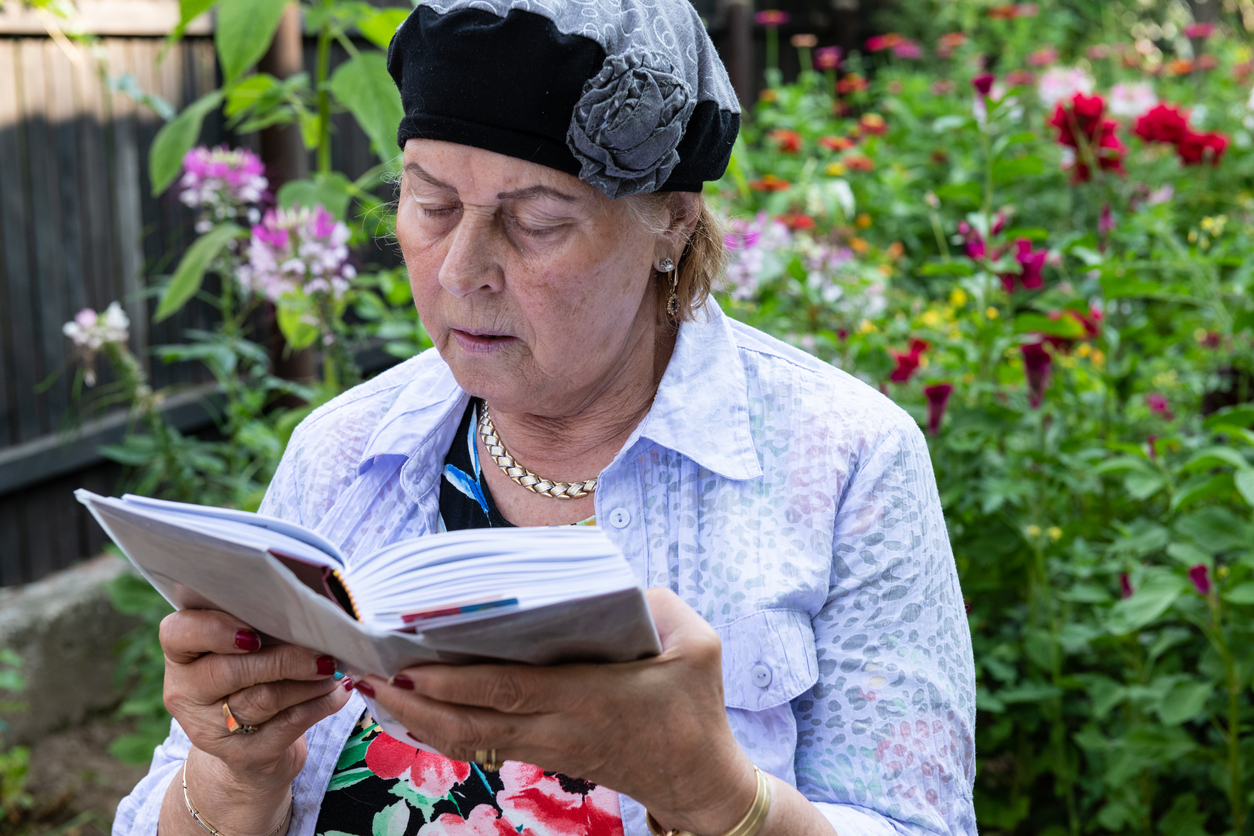When my husband shared his dream of transforming the untamed space behind our home (at that time it didn’t deserve to be called a garden) into an open-air shul, I was skeptical. My husband isn’t a rabbi. I’m not a rebbetzin and a year ago, during COVID’s first wave, our small religious town was glutted with outdoor minyanim. But my husband envisioned something different. He wanted to create a shul where masking and social distancing were observed with utmost seriousness, sadly not the case in other outdoor minyanim.
That’s because my husband’s prospective guests were the oldest and most vulnerable men, many of whom were afraid to go to shul and badly missed being part of a minyan. In his shul, COVID safe, lemehadrin they could pray together safely.
It sounded like a beautiful pipe dream, but when he started ordering supplies–tables, fans face masks, rubber gloves, and hand sanitizer, and a contractor began laying the groundwork for a deck, I felt more than a bit queasy.
COVID hadn’t been kind to our finances. This wasn’t the time for us to be spending money, yet it felt sacrilegious to halt a plan so clearly infused with holiness. So I held my tongue–at least I thought I did, though my husband claims that my facial expression mirrored my real feelings.
A week before Rosh Hashanah 2020, the deck was laid and my husband had constructed a provisional amud with a thick plastic barrier separating the Torah reader from those receiving aliyas. On each table, he placed a plastic box filled with masks, surgical gloves, alcogel, tissues, and water–COVID era swag.
He started soaking his shofar in water-he planned to blow it himself. He also secured a borrowed Torah scroll and hired a chazan; our upstairs neighbor whose name we hardly knew before the pandemic had both a sweet operatic tenor and a solid grounding in the High Holiday liturgy.
Even I took this as a sign that heaven was smiling down on my husband’s plan. Everything seemed to be lining up… except for one thing–worshippers.
I listened in as my poor husband made call after call, but the old health-challenged men didn’t seem interested.
What was the point?
Secretly, I breathed a sigh of relief. I hadn’t wanted this and now it seemed to be dying a natural death
Then Mr. G., an octogenarian with a severely compromised immune system called. Mr. G. had been an avid shul goer, but since March of 2020, he’d been praying at home and his wife said he’d been sliding into depression as a result.
With a green light from his physician, he planned to join my husband davening from behind a homemade plastic enclosure which he called a “Corona box.”
A few women also expressed interest. With our local shul shuttering their women’s sections, our garden shul with its overhanging balcony–was a perfect alternative. But, in our community, that didn’t solve the problem. We needed men for the minyan.
Would my husband manage to find enough?
He kept calling. Until candle lighting, he worked the phones, but ultimately, the debut service flopped.
That first Rosh Hashanah ma’ariv, seven men, including Mr. G, turned up. For almost a quarter of an hour, our erstwhile chazan stood on the street calling out “minyan, minyan,” but no one else joined. Eventually, the seven dispersed to say their prayers elsewhere.
My husband hid his pain behind a wall of stoicism. “It was crazy to start on Rosh Hashanah. If it doesn’t work out, it doesn’t work out,” he said. But I was devastated.
I hadn’t wanted this shul but my husband had put his whole heart into creating it–I couldn’t bear to see him fail.
After dinner, together with one of my sons, I knocked on doors, making a point to target families with large male populations. “Please. We need you,” I begged. Everyone was sympathetic, but no one would commit. The best we got was a few maybes.
I also prayed. Boy did I pray. “Please Hashem, make our shul happen.” “Our shul,” Suddenly I was all in on this project which I had once scorned.
In the morning, our miracle arrived. We had our minyan -not of old men, but of teenagers, plus a small crowd on the women’s balcony. I felt like dancing and singing! But all wasn’t smooth sailing.
Midway through the reading, our borrowed Torah scroll split in half. Oh no! I felt my heart fall into my shoes. How would we go on?
The services ground to a halt while my husband and the chazan searched for an alternate scroll. Ten minutes later, my husband reappeared, clutching a Torah scroll next to his heart.
Since that first Rosh Hashanah, we’ve always had a minyan.
And our little group has melded into a community. Mr. G. in his corona box, other octogenarians, teenagers, and young married men who bring their children. My husband keeps a steady supply of nosh.
Having one’s own shul has certain remarkable perks I’ll never forget the thrill of watching a Torah scroll being rolled up on my dining room table or the delight of directing a visiting grandson to the garden so that he can daven at “Saba’s shul.”
A couple of weeks ago it looked like our shul had outlived its purpose–the COVID numbers were down. It looked like the virus had been vanquished. But shortly afterward, the Delta variant changed the scene. As the new variant began rapidly spreading our shul was once again booming. And, yes, we are planning for another Rosh Hashanah. Perhaps we’ll need to sell tickets to prevent overcrowding.
While I pray for the day we can close for good, I treasure our micro-community of young and old, Ashkenazi and Sephardi, and the music of their davening wafting from the garden into my home.
Joan Orange is a writer who loves to share her observations of Jewish life.

